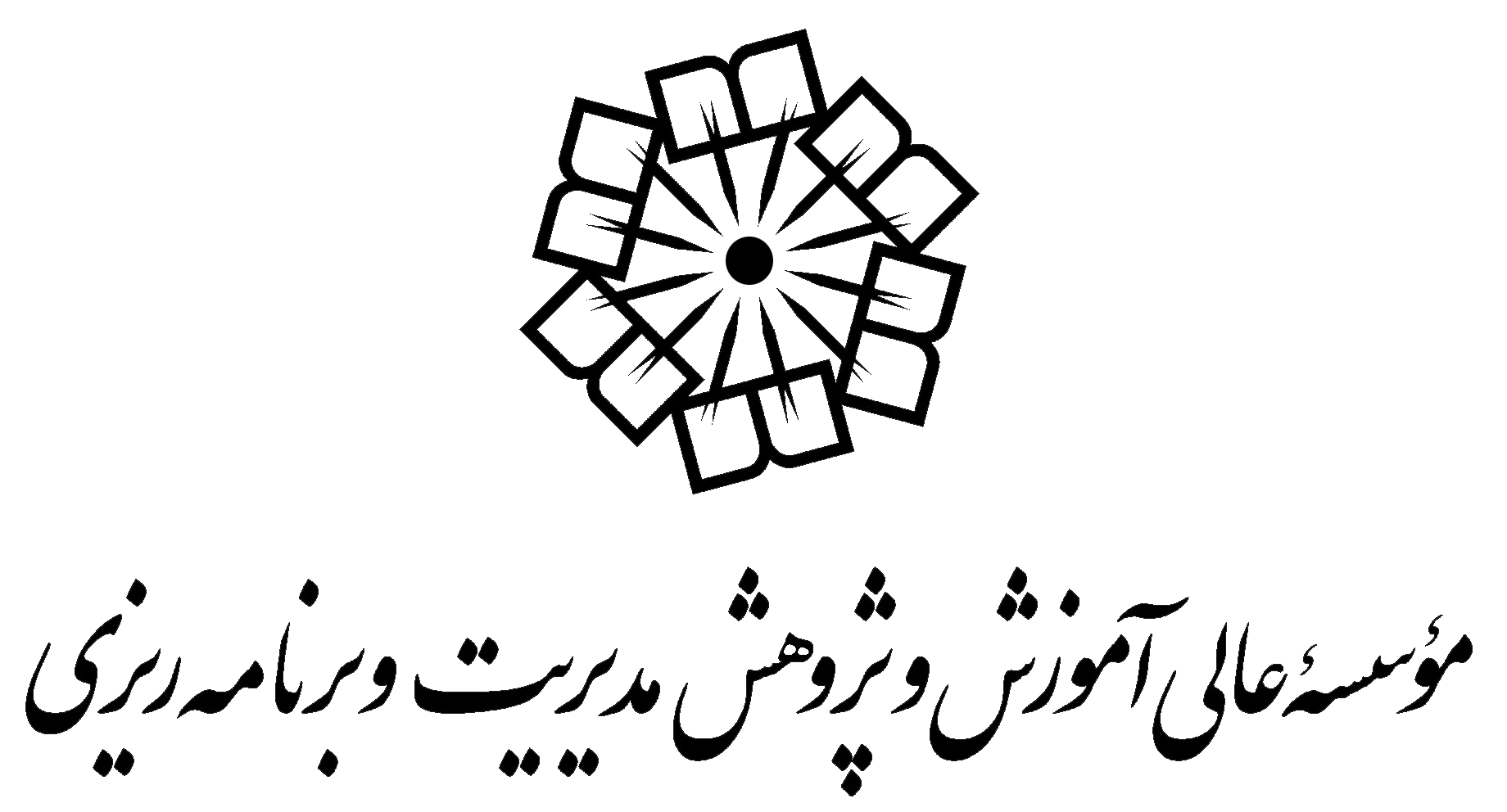تابستان
برگشت به فهرست مقالات |
برگشت به فهرست نسخه ها
مدلسازی غیرخطی اثر شاخصهای نهادی–توسعهای بر تولید ناخالص داخلی ایران با بهرهگیری از روش سطح پاسخ
1- گروه مدیریت، دانشکده مدیریت و اقتصاد، دانشگاه لرستان، خرمآباد، ایران. ، aliasghar.abdeshahi@gmail.com
2- رئیس امور اداری و خدمات عمومی، بیمارستان تأمین اجتماعی، خرمآباد، ایران.
2- رئیس امور اداری و خدمات عمومی، بیمارستان تأمین اجتماعی، خرمآباد، ایران.
چکیده: (447 مشاهده)
هدف: این پژوهش به بررسی اثرات غیرخطی سه شاخص نهادی–توسعهای شامل توسعه دولت الکترونیک، توسعه انسانی و اثربخشی حکمرانی بر تولید ناخالص داخلی ایران طی سالهای ۲۰۱۰ تا ۲۰۲۴ میپردازد. هدف اصلی، شناسایی نه تنها آثار منفرد این شاخصها بلکه ترکیبهای بهینه آنها برای ارتقای رشد پایدار اقتصادی است.
روششناسی/رویکرد: پژوهش حاضر کمّی و کاربردی بوده و بر دادههای ثانویه جهانی استوار است. برای تحلیل روابط خطی، درجه دوم و تعاملی میان متغیرها، از روش سطح پاسخ استفاده شد. این رویکرد امکان مدلسازی معادلات درجه دوم و شناسایی نقاط بهینه سیاستی را فراهم میسازد؛ امری که مدلهای اقتصادسنجی خطی رایج کمتر قادر به تبیین آن هستند.
یافتهها: نتایج نشان داد توسعه دولت الکترونیک بیشترین و قویترین اثر مثبت را بر رشد تولید ناخالص داخلی دارد و نقش محوری ایفا میکند. اثربخشی حکمرانی نیز رابطهای مثبت و فزاینده با تولید ناخالص داخلی دارد و ارتقای کیفیت نهادی، رشد اقتصادی را تقویت میکند. در مقابل، توسعه انسانی در سطوح پایین اثر مثبت دارد اما با عبور از یک آستانه مشخص، با بازدهی کاهشی روبهرو میشود که بیانگر پدیده «اشباع بازدهی» است.
ارزش/اصالت پژوهش: این مطالعه برای نخستین بار در ایران با بهرهگیری از روش سطح پاسخ به مدلسازی اثرات غیرخطی نهادی پرداخته و الگویی نوآورانه برای تحلیل سیاستهای اقتصادی ارائه میدهد.
پیشنهادها: یافتهها بر ضرورت تقویت دولت الکترونیک و بهبود حکمرانی تأکید دارند. همچنین توصیه میشود برنامههای توسعه انسانی با توجه به بازدهی حاشیهای طراحی و اجرا شوند تا بهرهوری بلندمدت بهینه گردد.
روششناسی/رویکرد: پژوهش حاضر کمّی و کاربردی بوده و بر دادههای ثانویه جهانی استوار است. برای تحلیل روابط خطی، درجه دوم و تعاملی میان متغیرها، از روش سطح پاسخ استفاده شد. این رویکرد امکان مدلسازی معادلات درجه دوم و شناسایی نقاط بهینه سیاستی را فراهم میسازد؛ امری که مدلهای اقتصادسنجی خطی رایج کمتر قادر به تبیین آن هستند.
یافتهها: نتایج نشان داد توسعه دولت الکترونیک بیشترین و قویترین اثر مثبت را بر رشد تولید ناخالص داخلی دارد و نقش محوری ایفا میکند. اثربخشی حکمرانی نیز رابطهای مثبت و فزاینده با تولید ناخالص داخلی دارد و ارتقای کیفیت نهادی، رشد اقتصادی را تقویت میکند. در مقابل، توسعه انسانی در سطوح پایین اثر مثبت دارد اما با عبور از یک آستانه مشخص، با بازدهی کاهشی روبهرو میشود که بیانگر پدیده «اشباع بازدهی» است.
ارزش/اصالت پژوهش: این مطالعه برای نخستین بار در ایران با بهرهگیری از روش سطح پاسخ به مدلسازی اثرات غیرخطی نهادی پرداخته و الگویی نوآورانه برای تحلیل سیاستهای اقتصادی ارائه میدهد.
پیشنهادها: یافتهها بر ضرورت تقویت دولت الکترونیک و بهبود حکمرانی تأکید دارند. همچنین توصیه میشود برنامههای توسعه انسانی با توجه به بازدهی حاشیهای طراحی و اجرا شوند تا بهرهوری بلندمدت بهینه گردد.
واژههای کلیدی: دولت الکترونیک، حکمرانی اثربخش، توسعه انسانی، رشد اقتصادی، روش سطح پاسخ، خطمشیگذاری اقتصادی.
فهرست منابع
1. Abu Alfoul, M. N., Tajaddini, R., Gholipour, H. F., Bashar, O., & Jamaani, F. (2024). The impacts of ICT on economic growth in the MENA countries: Does institutional matter? Politická ekonomie, 72(3), 446-477. [DOI:10.18267/j.polek.1409]
2. Al-Refai, M. (2020). The impact of e-government on economic growth in GCC countries. International Review, 1(1), 18-28. [DOI:10.5937/intrev2001018A]
3. Alkharisi, M. K., & Dahish, H. A. (2025). The application of response surface methodology and machine learning for predicting the compressive strength of recycled aggregate concrete containing polypropylene fibers and supplementary cementitious materials. Sustainability, 17(7), 2913. [DOI:10.3390/su17072913]
4. Al-Masouri, K., Rezaeian, A., Nezafati, N., & Avtar-Khani, A. (2020). Designing and explaining an IT capability-based model to measure organizational intelligence for improving the status of e-government (Case study: A public university in Iran). National Conference on Civil Engineering, Architecture and IT in Urban Life, Mashhad. (In Persian) [https://civilica.com/doc/1134723]
5. Banerjee, P., & Choudhury, S. (2020). Agent-based computational model aided approach to improvise the inequality-adjusted human development index (IHDI) for greater parity in real scenario assessments. [DOI:10.48550/arXiv.2010.03677]
6. Bedane, B. G., Alam, M. R., & Kitenge, E. (2017). Government effectiveness and economic growth. Economics Bulletin, 37(1), 222-227.
7. Bhunia, A., & Dean, J. (2020). Inequality adjusted human development index: A method for the economics of frustration and the computation of its model. ResearchGate. [DOI:10.13140/RG.2.2.22613.65768]
8. Enlyft. (2025). Companies using JMP. Retrieved May 16, 2025. [https://enlyft.com/tech/products/jmp]
9. Fawaz, F., Mnif, A., & Popiashvili, A. (2021). Impact of governance on economic growth in developing countries: A case of HIDC vs. LIDC. Journal of Social and Economic Development, 23(2), 1-15. [DOI:10.1007/s40847-021-00149-x]
10. Gruzina, Y., Firsova, I., & Strielkowski, W. (2021). Dynamics of human capital development in economic development cycles. Economies, 9(2), 67. [DOI:10.3390/economies9020067]
11. Jamaldini M, Hosseinzadeh B, Shojaee A A. (2022). Investigating the effect of web-based management on organizational time management. Management and Development Process (JMDP), 35(3), 197-219. (In Persian) [DOI:10.52547/jmdp.35.3.197]
12. Kaiser, Z. R. M. A. (2024). Smart governance for smart cities and nations. Journal of Economy and Technology, 2(1), 216-234. [DOI:10.1016/j.ject.2024.07.003]
13. Khodabandeh R, Monavarian A, Nargesian A. (2024). A Model for Tax Evasion Prevention in Iran, Based on Preventive Network Governance Approach. Management and Development Process (JMDP). 36(4), 3-33. (In Persian) [DOI:10.61186/jmdp.36.4.3]
14. Kim, D. (2018). A nonlinear economic growth model: A system dynamics perspective. Korean System Dynamics Review, 19(1), 31-56. [DOI:10.32588/ksds.19.1.2]
15. Lopes, L. E. M., Packham, N., & Walther, U. (2023). The effect of governance quality on future economic growth: An analysis and comparison of emerging market and developed economies. SN Business & Economics, 3(6). [DOI:10.1007/s43546-023-00488-3]
16. Mathews, P. G. (2005). Design of experiments with MINITAB. ASQ Quality Press.
17. Mahmoudi, M. (2021). Identifying the main factors of Iran's economic growth using growth accounting framework. European Journal of Business and Management Research, 6(5), 239-245. [DOI:10.24018/ejbmr.2021.6.5.1099]
18. Myers, R. H., Montgomery, D. C., & Anderson-Cook, C. M. (2016). Response surface methodology: Process and product optimization using designed experiments (4th ed.). Wiley.
19. Nasiri H, Yamani Douzi Sorkhabi M, Zaker-Salehi G, Abolghasemi M. (2022). Analysis of predicted interactions of science and technology stakeholders in upstream laws and documents. Management and Development Process (JMDP), 35(3), 165-195. (In Persian) [DOI:10.52547/jmdp.35.3.165]
20. Piddubna, L., Dybach, I., Krasovskiy, V., Pliekhanov, K., & Mogylevskyi, R. (2024). Analysis of the impact of digital development on a country's economic growth. Economics of Development, 23(2), 38-46. [DOI:10.57111/econ/2.2024.38]
21. Rahman, R. A., Raja, M. A., & Ryan, C. (2020). The impact of human development on economic growth: A panel data approach. SSRN Electronic Journal. [DOI:10.2139/ssrn.3526909]
22. Rahmani, A., Behbahaninia, P. S., Parsaei, M., & Mahmoudkhani, M. (2023). A public sector financial management maturity model for developing countries: The case of Iran. International Review of Administrative Sciences, 90(3), 581-598. [DOI:10.1177/00208523231195707]
23. Rahnaward, F. (2022). Mega-Policies of The Development Plan: A Case Study of Iran. Management and Development Process (JMDP), 35(3), 3-56. (In Persian) [DOI:10.52547/jmdp.35.3.3]
24. Rizkallah, W. W. A. (2020). The relationship between good governance and sustainable human development in Egypt. International Journal of Advanced Engineering and Business Sciences, 1(1), 25-40. [DOI:10.21608/ijaebs.2021.43833.1003]
25. Roxas, B. (2025). E-governance and sustainable human development in Asia: A dynamic institutional path perspective. Journal of Asian Business and Economic Studies, 32(1), 15-27. [DOI:10.1108/JABES-02-2024-0076]
26. Saunders, M., Lewis, P., & Thornhill, A. (2019). Research methods for business students (8th ed.). Pearson.
27. Simaei Chafi, H., & Memarzadeh Tehran, G. (2022). Designing a capacity-building model for network governance. Management and Development Process (JMDP), 35(1), 25-52. (In Persian) [DOI:10.52547/jmdp.35.1.25]
28. Sukarno, M., & Nurmandi, A. (2023). E-government development index impact on world governance indicator index in Southeast Asian countries. Journal of Contemporary Governance and Public Policy, 4(1), 97-114. [DOI:10.46507/jcgpp.v4i1.106]
29. Taherpour Kalantari, H., Rahnaward, F., & Hoseini Maram, S. M. T. (2012). Identifying barriers to the implementation of e-government in governmental organizations in Qom province. Management and Development Process (JMDP), 25(4), 87-112. (In Persian) [http://jmdp.ir/article-1-1344-fa.html]
30. Tan, S. Y., & Taeihagh, A. (2020). Smart city governance in developing countries: A systematic literature review. Sustainability, 12(3), 899. [DOI:10.3390/su12030899]
31. United Nations Development Programme (UNDP). (2024). Human development indicators: Iran (Islamic Republic of). Humanitarian Data Exchange. Retrieved May 14, 2025. [https://data.humdata.org/dataset/hdro-data-for-iran-islamic-republic-of]
32. World Bank. (2024a). Worldwide governance indicators: (Islamic Republic of Iran). Data Bank. Retrieved May 14, 2025. [https://databank.worldbank.org/iran/id/d73269b2]
33. World Bank. (2024b). E-Government Development Index (EGDI). Data360. Retrieved May 14, 2025. [https://data360.worldbank.org/en/dataset/UN_EGDI]
34. World Bank. (2024c). GDP (current US$) - Iran (Islamic Republic of). World Bank Open Data. Retrieved May 14, 2025. [https://data.worldbank.org/indicator/NY.GDP.MKTP.CD?locations=IR]
| بازنشر اطلاعات | |
 |
این مقاله تحت شرایط Creative Commons Attribution 4.0 International License قابل بازنشر است. |






